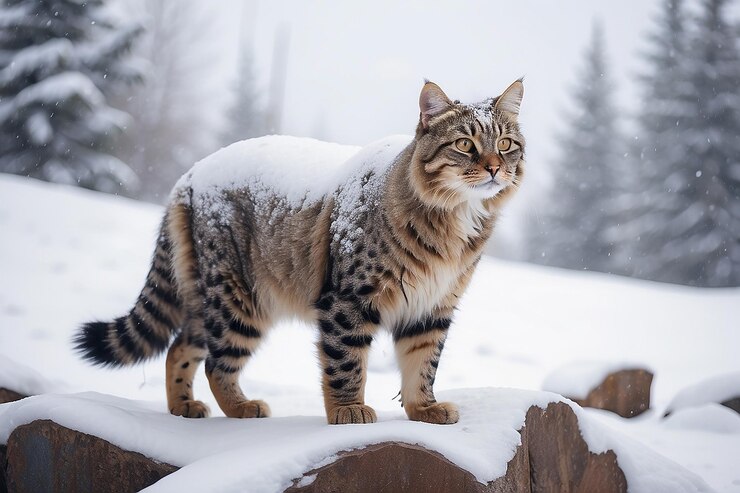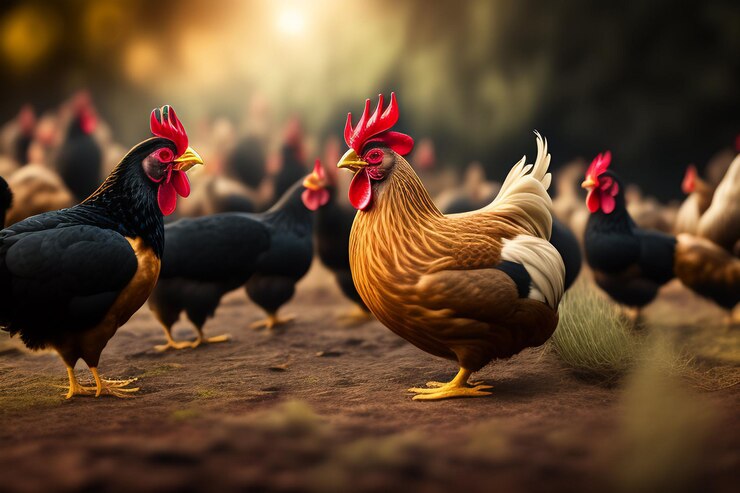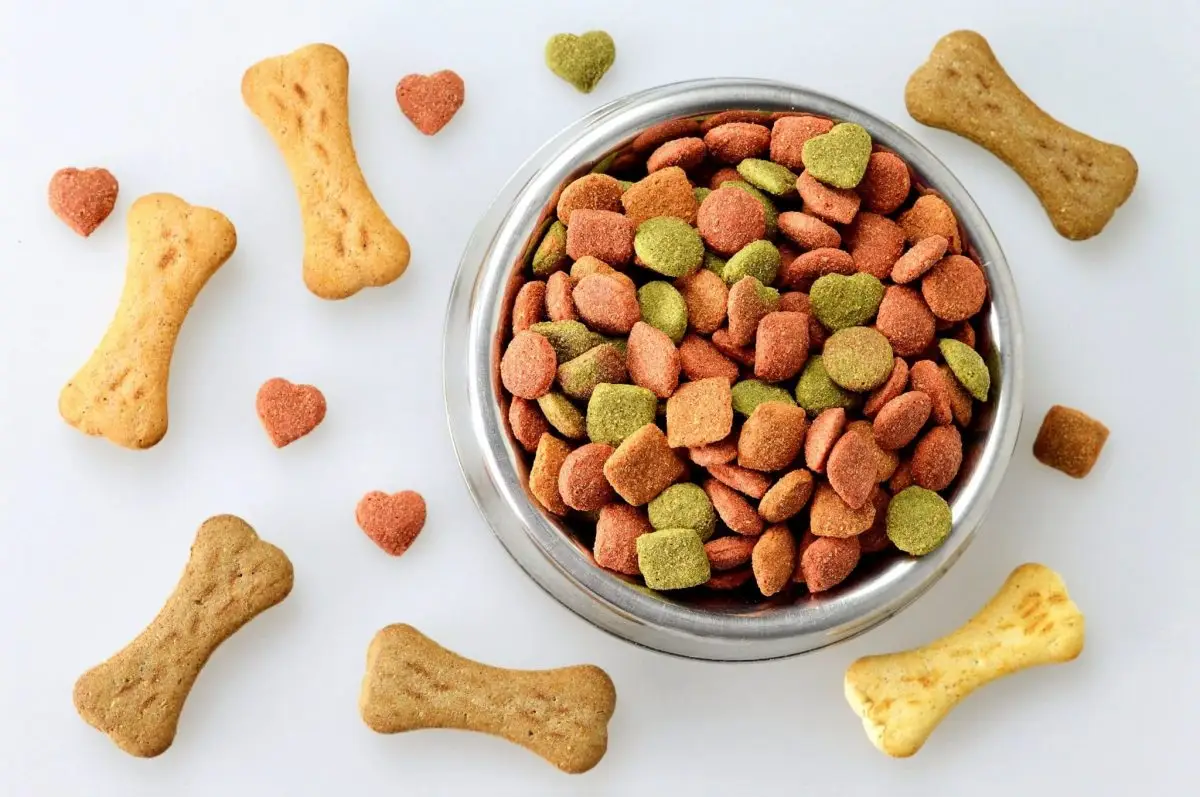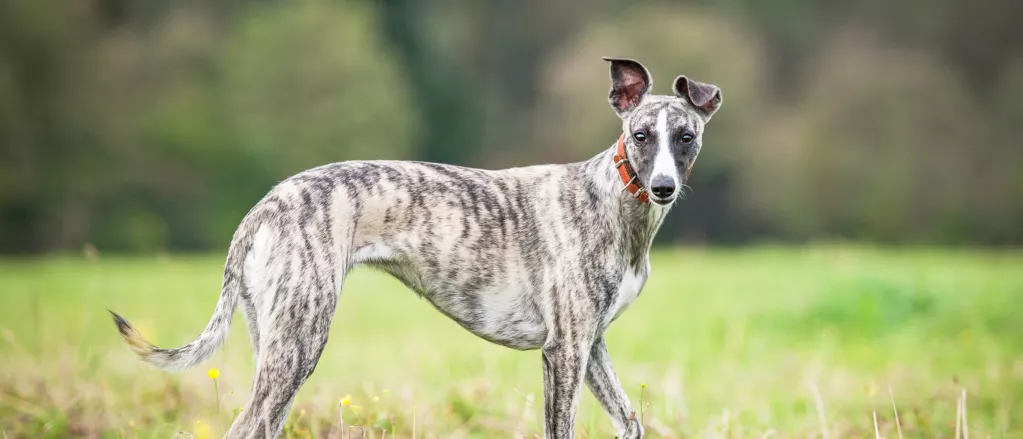Pets
Meet the Snow Cat: An In-Depth Look at Their Habitat, Behavior, and Adaptations

Welcome to the enchanting world of the elusive and majestic snow cat! These fascinating creatures roam the snowy landscapes with stealth and grace, captivating anyone lucky enough to catch a glimpse of them. In this blog post, we will take an in-depth look at their habitat, behavior, adaptations, and more. Get ready to dive into the intriguing world of the snow cat – you’re in for a wild ride!
Table of Contents
What Is a Snow Cat?
The snow cat, also known as the snow leopard or ounce, is a stunningly beautiful big cat native to the rugged mountain ranges of Central and South Asia. With its thick fur coat adorned with rosette-shaped spots and long tail for balance, this elusive feline is perfectly adapted to its harsh alpine environment.
Despite their name, snow cats are not actually closely related to other types of large cats like lions or tigers. They have unique physical characteristics that set them apart from their big cat cousins – their smoky-gray fur helps them blend seamlessly into the snowy terrain, making them expert camouflage artists.
These solitary hunters are masters of stealth and agility, capable of leaping great distances in pursuit of prey. Their keen senses and powerful hind legs make them formidable predators in their high-altitude domain.
Stay tuned as we delve deeper into the mysterious world of the captivating snow cat!
Snow Cat Habitat and Behavior
Snow cats, also known as snow leopards, are majestic creatures that dwell in the rugged and harsh terrains of Central and South Asia. Their habitat ranges from rocky mountain slopes to alpine meadows, where they navigate with incredible agility. These elusive felines are solitary by nature, preferring to roam alone through their vast territories.
Snow cats are highly skilled hunters, preying on animals such as ibex and blue sheep. With keen eyesight and powerful hind limbs for leaping great distances, they stealthily stalk their prey before pouncing with precision. Despite their fierce hunting abilities, snow cats are surprisingly elusive and often go unnoticed in their snowy surroundings.
Their behavior is characterized by a quiet demeanor; they communicate through vocalizations like growls and chuffs rather than loud roars like other big cats. Observing them in the wild requires patience and respect for their space.
Intriguingly adaptable to extreme cold temperatures, snow cats have thick fur coats that insulate them against freezing weather conditions while also providing effective camouflage amidst the snowy landscapes. Their long tails help maintain balance during agile movements across steep cliffs and rocky terrain.
Understanding the habitat and behavior of these remarkable animals sheds light on how they survive in some of the harshest environments on Earth.
Snow Cat Adaptations
Snow cats, also known as snow leopards, have a range of remarkable adaptations that enable them to thrive in their harsh mountainous habitats. One key adaptation is their thick fur coat, which helps insulate them from the cold temperatures at high altitudes. Their beautiful spotted coats not only provide camouflage in the rocky terrain but also help regulate body temperature.
Their large nasal cavities warm up the frigid air they breathe in before it reaches their lungs, preventing heat loss and conserving energy. Snow cats’ powerful hind legs allow them to leap distances of over 50 feet and reach speeds of up to 40 miles per hour when hunting prey. Their long tail provides balance on rugged terrain and serves as a cozy wrap-around blanket when resting.
Additionally, snow cats possess keen eyesight that aids them in spotting prey from far distances amidst snowy landscapes. Their retractable claws help maintain traction on steep slopes while silently stalking prey. These incredible adaptations collectively contribute to the snow cat’s survival in some of the world’s most challenging environments.
Snow Cat FAQs
Curious about snow cats and want to know more? Here are some frequently asked questions about these magnificent creatures!
1. What do snow cats eat?** Snow cats primarily feed on small mammals like rabbits, rodents, and birds. Their diet is high in protein to sustain their active lifestyle in the cold mountains.
2. How big do snow cats get?** Adult snow cats can weigh anywhere between 22-55 pounds, with males typically being larger than females. They have a compact build that helps them maneuver through snowy terrain effortlessly.
3. Are snow cats endangered?** While not classified as endangered, snow cat populations are at risk due to habitat loss and climate change affecting their mountainous homes.
4. Do snow cats roar like other big cats?** Unlike lions or tigers, snow cats don’t roar; they communicate through various vocalizations like purring, hissing, and meowing.
5. Can you domesticate a snow cat? Due to their wild nature and specialized needs for survival in harsh environments, it’s not recommended to keep a snow-cat as a pet.
Have more burning questions about these elusive felines? Keep exploring!
Surprising Facts About Snow-Cats
Did you know that snow-cats are also known as “ghost cats” due to their elusive nature in the wild? These majestic creatures have incredible night vision, allowing them to hunt effectively even in low light conditions. Snow-cats possess retractable claws, giving them a strong grip on slippery surfaces like ice and snow.
Another surprising fact about snow-cats is their ability to leap up to 15 feet in the air! This impressive skill helps them catch agile prey such as birds or mountain goats. Despite their solitary nature, these felines communicate with each other through vocalizations like purring, hissing, and growling.
Snow-cats are highly territorial animals, marking their boundaries with scent glands located on their cheeks. Their thick fur not only provides insulation against cold temperatures but also helps camouflage them in snowy environments. It’s truly fascinating how these beautiful creatures have adapted to thrive in harsh winter conditions!
Snow-Cat Models and Technology
Snow-cat models and technology have come a long way in aiding researchers and conservationists in studying these elusive creatures. Advances in tracking collars equipped with GPS technology allow scientists to monitor snow-cats’ movements with precision, shedding light on their behaviors and habitats.
Drones fitted with high-resolution cameras have revolutionized the way we observe snow-cats from above, providing valuable insights into their activities without disturbing them. These innovative tools enable researchers to collect data remotely, minimizing human impact on these majestic felines.
Sophisticated camera traps capture stunning images of snow-cats in their natural environment, offering glimpses into their secretive lives that were once difficult to obtain. The use of thermal imaging technology has also been instrumental in detecting snow-cats during night patrols, enhancing our understanding of their nocturnal habits.
The integration of cutting-edge models and technology continues to enhance our knowledge of snow-cats while ensuring minimal disturbance to these enigmatic animals.
Snow-Cats in Action
Snow-cats are fascinating creatures, known for their agility and grace in action. These majestic felines can be seen prowling through the snow-covered terrain with stealth and precision. With their thick fur coats designed to withstand harsh winter conditions, they effortlessly navigate through the icy landscapes.
Their keen senses allow them to detect even the slightest movement, making them excellent hunters. Snow-cats exhibit remarkable hunting techniques as they stalk their prey with calculated movements before pouncing swiftly with incredible speed and accuracy. Their powerful hind legs propel them forward in pursuit of food, showcasing their prowess as skilled predators.
Observing snow-cats in action is a sight to behold – from graceful leaps across snowy expanses to swift takedowns of unsuspecting prey. These elusive creatures embody the essence of survival in challenging environments, demonstrating adaptability and resourcefulness in every move they make.
In their natural habitat, snow-cats command respect and admiration for their ability to thrive in extreme cold climates while maintaining a sense of elegance and strength unparalleled by any other species.
Conclusion
Snow-cats are truly remarkable creatures, perfectly adapted to thrive in some of the harshest environments on Earth. Their habitat, behavior, and adaptations all work together to make them formidable hunters and survivors in the snowy wilderness. As we continue to study and learn more about these majestic animals, it’s important for us to respect their natural habitats and ensure their conservation for generations to come. So next time you see a snow-cat prowling through the icy landscapes, take a moment to appreciate the beauty and resilience of these incredible felines. They truly are a symbol of strength and adaptability in the face of adversity.
Education
Flock Talk: Understanding the Terminology for Groups of Chickens

Welcome to the wonderful world of chickens, where clucks and pecks reign supreme! Have you ever stopped to wonder what a group of these feathered friends is called? Join us as we delve into the fascinating terminology for groups of chickens in this flock talk blog post. From herds to flocks, wild wanderers to domestic darlings, let’s uncover the mysteries behind these social birds and their collective names. So grab your feed bucket and get ready to strut your stuff in the poultry knowledge department!
Table of Contents
What Is A Groups Of Chickens Called? (Why & Interesting Facts)
Ever wondered what to call a gathering of chickens? Well, hold onto your feathers because here’s the scoop! A group of chickens is commonly referred to as a “flock.” This term perfectly captures their social nature, as they prefer sticking together and roaming around in groups.
But why do we use the word “flock” for chickens specifically? It stems from their natural instinct to stay close to one another for safety and companionship. In the wild, this behavior helps them watch out for predators and communicate effectively within the group.
Interestingly, a flock can consist of various breeds and ages of chickens living harmoniously together. Whether it’s a handful of hens or a roost full of roosters, these feathered friends find strength in numbers when navigating their coop life adventures. So next time you see a bunch of chickens strutting around together, remember they’re not just any old group – they’re a lively flock with tales to tell!
What is a flock of chickens called?
Ever wondered what a group of chickens is called? Well, you’re in for a fun fact! A flock of chickens might seem like just a random gathering of birds, but there’s actually a specific term for it. When chickens gather together, they form what is known as a “flock.” This term perfectly captures the image of these social birds moving and pecking around together.
In the world of poultry, the concept of a flock goes beyond just a simple gathering. It represents unity, safety in numbers, and social interactions among these feathered friends. Chickens have an innate sense of community and hierarchy within their flocks.
So next time you see a group of chickens clucking around in unison, remember that they are partaking in their natural behavior by sticking together as a flock. The dynamics within a chicken flock can be quite fascinating to observe – from establishing pecking orders to communicating through various sounds and movements.
Understanding the terminology for groups of chickens adds another layer to appreciating these unique creatures’ social behaviors.
Is it a herd or flock of chickens?
When it comes to describing a group of chickens, the term “flock” is commonly used. However, there has been some debate over whether it should be referred to as a herd or flock. The confusion might stem from the fact that both terms are often used interchangeably in casual conversation.
In general, “herd” is more commonly associated with animals like cattle or sheep, which move together in a cohesive unit. On the other hand, “flock” tends to be used for birds such as chickens that fly and roost together. Chickens naturally exhibit flocking behavior, sticking close to one another for safety and social interaction.
Therefore, while technically both terms could apply depending on context, using “flock” when referring to a group of chickens would be more accurate and fitting based on their natural behaviors and tendencies. So next time you see a gathering of these feathered friends, remember they are most likely forming a cozy little chicken flock!
How social are chickens?
Chickens, surprisingly, are quite social creatures. They form strong bonds within their flock and have a complex hierarchy. These feathered friends communicate through various vocalizations, body language, and even establish pecking orders to maintain order.
In a chicken coop or free-range setting, you can observe them engaging in activities together like foraging for food or dust bathing. They also display empathy towards each other by comforting distressed members of the flock.
Chickens have been known to show signs of distress when separated from their group or isolated. This demonstrates their need for social interaction and companionship within the flock.
Whether they’re scratching around for bugs or roosting together at night, chickens enjoy each other’s company and thrive in a communal environment. It’s fascinating to witness these social dynamics play out among our feathered companions.
Why Is It Called A Herd?
Have you ever wondered why a group of chickens is called a herd? The term “herd” is typically associated with animals like cows or sheep, so it might seem odd to use it for chickens. However, the reason behind this terminology dates back to centuries ago when people used the word “herd” more broadly to refer to any group of domesticated animals.
Chickens were often lumped together with other farm animals under the category of a herd. Over time, this association stuck and became part of our common language when describing groups of different species. Even though chickens have their unique behaviors and characteristics that set them apart from traditional herd animals, the term has persisted in popular usage.
So next time you hear someone mention a herd of Groups of Chickens, remember that language evolves over time and sometimes takes unexpected turns in its journey through history.
Do Wild Chicken Flock Together Too?
Have you ever wondered if wild chickens flock together like their domestic counterparts? In the wild, chicken behavior can be quite fascinating. While domesticated chickens are known to form flocks for safety and social interactions, wild Groups of Chickens also exhibit similar behavior patterns. These birds are not solitary creatures; they often gather in groups to roost, forage for food, and protect each other from predators.
Wild Groups of Chickens rely on their flock for survival in their natural habitats. By sticking together, they increase their chances of finding food sources and staying safe from potential threats. The dynamics within a wild chicken flock can be complex, with hierarchies forming based on dominance and pecking order.
Observing wild Groups of Chickens interacting in their natural environment offers valuable insights into the social structures of these fascinating birds. It’s truly amazing to witness how even in the wild, Groups of Chickens understand the importance of unity and cooperation within their group.
Let others know your thoughts or ask an expert
Curious about the social dynamics of Groups of Chickens behavior? Maybe you’ve observed your flock and have some interesting insights to share. Or perhaps you’re looking for expert opinions on why Groups of Chickens exhibit certain behaviors when they gather in groups.
Feel free to join the conversation and share your observations or questions with other chicken enthusiasts. Whether you’re a seasoned farmer, a backyard chicken keeper, or just someone fascinated by these feathered creatures, your input can add valuable perspectives to this discussion.
Have a unique story about how your Groups of Chickens interact with each other? Wondering if certain behaviors are common among different chicken breeds? Don’t hesitate to reach out and engage with fellow poultry lovers who may have similar experiences or knowledge to offer.
The Groups of Chickens is vast and full of intriguing details waiting to be explored. So don’t be shy – let’s hear what’s on your mind regarding the fascinating world of group behavior in chickens!
Conclusion
Understanding the terminology for groups of chickens can offer insights into their social behavior and how they interact with one another. From a flock of Groups of Chickens to a herd, these terms reflect the nature of these birds as communal animals that thrive in group settings.
Whether you’re a seasoned chicken enthusiast or just starting your journey into the world of poultry keeping, knowing what a group of chickens is called adds an extra layer of understanding to these fascinating creatures. So next time you observe your feathered friends interacting in their coop or free-ranging in the yard, take a moment to appreciate the dynamics at play within their flock. After all, there’s more to Groups of Chickens than meets the eye!
Pets
Discover the Benefits of Pure Balance Dog Food for Your Furry Friend

Calling all dog lovers and fur parents! If you’re on the hunt for top-quality nutrition that will keep your furry friend wagging their tail with delight, look no further than Pure Balance Dog Food. In this blog post, we’ll dive into the benefits of Pure Balance’s premium offerings, from grain-free options to variety packs that cater to every pup’s palate. Discover why Pure Balance is a brand worth barking about and treat your canine companion to the wholesome goodness they deserve.
Table of Contents
Brand Overview of Pure Balance Dog Food
Pure Balance Dog Food is a brand committed to providing pet parents with high-quality, balanced nutrition for their beloved pups. With a focus on using real meat as the first ingredient in many of their recipes, Pure Balance ensures that your furry friend gets the protein they need to thrive. This brand prides itself on offering a variety of options to cater to different dietary preferences and needs, whether your dog prefers grain-free formulas or limited ingredient recipes.
What sets Pure Balance apart is its dedication to creating wholesome meals without artificial flavors, colors, or preservatives. Each bag of dog food is packed with essential vitamins and minerals to support your pup’s overall health and well-being. Plus, with a range of flavors and formulations to choose from, you can find the perfect match for your canine companion’s taste buds and nutritional requirements.
Pure Balance Dog Food: Our Top Picks
When it comes to choosing the best for your furry friend, Pure Balance Dog Food offers a range of options that cater to different needs and preferences.
One top pick is the Pure Balance Grain-Free Dog Food, ideal for dogs with sensitivities or allergies as it excludes grains like corn, wheat, and soy. Another great choice is the Pure Balance Variety Pack, providing a mix of flavors to keep mealtime exciting for your pet.
For small breed owners, the Canidae Pure Petite Premium Dog Food offers quality ingredients tailored to meet their unique nutritional requirements. Additionally, the Natural Balance Limited Ingredient Adult Dry Dog Food focuses on simplicity while ensuring balanced nutrition.
The Blue Buffalo Life Protection Formula stands out with its blend of high-quality proteins and wholesome grains for overall health support. Each option from Pure Balance showcases their commitment to providing nutritious meals for our beloved pets.
Pure Balance Grain-Free Dog Food
Looking for a high-quality dog food option that is grain-free? Pure Balance Grain-Free Dog Food might just be the answer for your furry friend. This formula is specially crafted to provide a balanced diet without the inclusion of grains, making it ideal for dogs with sensitivities or allergies.
With real meat as the first ingredient, Pure Balance Grain-Free Dog Food ensures that your pup gets the protein they need to thrive and maintain a healthy lifestyle. The absence of grains like corn, wheat, and soy reduces the risk of digestive issues and promotes better overall digestion.
Packed with essential nutrients and vitamins, this grain-free formula supports your dog’s energy levels, muscle development, and immune system. Plus, its delicious taste will surely have your canine companion wagging their tail in delight at mealtime.
Choose Pure Balance Grain-Free Dog Food for a wholesome meal option that prioritizes your dog’s health and well-being.
Pure Balance Variety Pack
Are you looking to add some variety to your furry friend’s mealtime routine? The Pure Balance Variety Pack might just be the solution you’ve been searching for.
This convenient pack offers a selection of different flavors and recipes, ensuring that your dog gets a taste of something new with each meal. From savory chicken to hearty beef, there’s something for every palate in this diverse assortment.
Not only does the Pure Balance Variety Pack provide an array of flavors, but it also prioritizes quality ingredients. Each recipe is crafted with real meat as the first ingredient, along with wholesome grains and vegetables to support your pup’s overall health and well-being.
With the Pure Balance Variety Pack, you can switch up your dog’s meals without compromising on nutrition or taste. It’s a win-win for both you and your four-legged companion!
Canidae Pure Petite Premium Dog Food
Canidae Pure Petite Premium Dog Food is a top choice for small breed dogs due to its high-quality ingredients and balanced nutrition. Small dogs have unique nutritional needs, and Canidae understands this with their specially formulated recipe.
This premium dog food is made with real meat as the first ingredient, ensuring your furry friend gets the protein they need to thrive. It also contains wholesome grains like brown rice and barley for energy and fiber.
Additionally, Canidae Pure Petite includes probiotics for digestive health and antioxidants for overall well-being. With no artificial preservatives or fillers, you can feel good about feeding your small pup this nutritious diet.
Choose Canidae Pure Petite Premium Dog Food to provide your little companion with the essential nutrients they need in a delicious meal tailored just for them.
Natural Balance Limited Ingredient Adult Dry Dog Food
If you’re searching for a dog food that caters to your furry friend’s specific dietary needs, look no further than Natural Balance Limited Ingredient Adult Dry Dog Food. This formula is specially crafted for dogs with sensitivities or allergies, ensuring they receive the nutrition they need without any unnecessary ingredients.
Natural Balance focuses on simplicity and quality, using limited but essential ingredients to provide a balanced diet for your beloved pet. With real meat as the first ingredient and carefully selected carbohydrates like sweet potatoes, this recipe offers a delicious and nutritious meal for your canine companion.
This dry dog food is free from artificial flavors, colors, and preservatives, giving you peace of mind knowing that your pup is getting wholesome nutrition. The limited ingredient list makes it easier to pinpoint any potential allergens while still providing all the necessary nutrients for a healthy lifestyle.
Choose Natural Balance Limited Ingredient Adult Dry Dog Food to support your dog’s well-being and ensure they thrive each day with every nourishing bite.
Blue Buffalo Life Protection Formula
Blue Buffalo Life Protection Formula is a popular choice among pet parents looking for quality nutrition for their furry companions. This formula is crafted with real meat as the first ingredient, providing essential protein to support your dog’s muscle health and overall wellbeing.
Made with wholesome grains, fruits, and vegetables, Blue Buffalo ensures a well-rounded diet that caters to your dog’s nutritional needs. The blend of antioxidants, vitamins, and minerals in this formula helps boost the immune system and promote healthy digestion.
With no artificial colors, flavors, or preservatives added, you can feel confident about feeding your pup a natural and nutritious meal. Plus, the LifeSource Bits included in this formula are specially formulated to support specific life stage requirements.
Whether you have a puppy or a senior dog, Blue Buffalo Life Protection Formula offers tailored nutrition to keep your four-legged friend happy and healthy for years to come.
What is Pure Balance dog food?
Pure Balance dog food is a premium pet food brand known for its high-quality ingredients and balanced nutrition. It offers a range of options tailored to meet the specific needs of different dogs, including grain-free varieties and limited ingredient formulas.
Made with real meat as the first ingredient, Pure Balance dog food provides essential proteins for your furry friend’s muscle development and overall health. With added vitamins, minerals, and antioxidants, this brand ensures that your pup gets all the necessary nutrients in every meal.
Whether you have a small breed or a large breed dog, Pure Balance offers options suitable for various sizes and life stages. Their recipes are crafted to support digestion, skin and coat health, joint function, and energy levels so that your pet can thrive every day.
By choosing Pure Balance dog food, you’re opting for a trusted brand committed to providing wholesome meals that cater to your canine companion’s well-being.
Is Pure Balance dog food grain-free?
Are you wondering if Pure Balance dog food is grain-free? The answer is yes! This brand offers a variety of grain-free options for your furry friend. Grain-free dog food can be beneficial for dogs with allergies or sensitivities to grains. By eliminating grains like corn, wheat, and soy, Pure Balance focuses on providing high-quality ingredients that are easier for dogs to digest.
Grain-free formulas often contain alternative sources of carbohydrates such as sweet potatoes or peas. These ingredients can still provide essential nutrients while catering to dogs who may struggle with traditional grains in their diet. Additionally, grain-free dog food can help maintain stable energy levels and promote a healthy coat and skin.
Pure Balance’s commitment to offering grain-free options ensures that pet owners have choices when it comes to selecting the best nutrition for their canine companions.
What is the ingredient analysis of Pure Balance dog food?
When it comes to the ingredient analysis of Pure Balance dog food, quality is at the forefront. The brand prides itself on using real meat as the first ingredient in many of its recipes. This ensures that your furry friend gets a protein-rich diet for optimal health and energy.
Additionally, Pure Balance dog food contains a balanced blend of whole grains, fruits, and vegetables to provide essential nutrients like vitamins and minerals. These wholesome ingredients work together to support your dog’s overall well-being and digestive health.
Moreover, you won’t find any artificial flavors or preservatives in Pure Balance dog food. The brand focuses on natural ingredients that are beneficial for your pet without unnecessary additives that could potentially harm their health.
When you choose Pure Balance dog food for your four-legged companion, you can feel confident knowing that they are getting a nutritious and delicious meal made with high-quality ingredients.
Does Pure Balance dog food have a recall history?
When it comes to our furry friends, their health and well-being are always a top priority. One common question pet owners have is whether Pure Balance dog food has had any recall history. It’s important to stay informed about the products we feed our pets to ensure they are safe and of high quality.
Fortunately, Pure Balance dog food has not had any recall history as of now. This speaks volumes about the brand’s commitment to providing safe and reliable products for pets. By choosing a brand with a clean recall record, pet owners can have peace of mind knowing they are feeding their four-legged companions something trustworthy.
However, it is essential for pet owners to stay updated on any potential recalls or changes in the future. Keeping an eye on official announcements from Pure Balance and staying connected with reputable sources can help ensure your pet continues to enjoy a healthy diet without any concerns surrounding product safety.
Is Pure Balance dog food a premium brand?
When it comes to pet nutrition, the term “premium brand” holds significant weight. Pure Balance dog food has made a name for itself in the pet food industry with its commitment to providing high-quality ingredients at an affordable price point. With a focus on real meat as the first ingredient and no artificial preservatives or fillers, Pure Balance sets itself apart as a premium option for discerning pet owners.
The brand’s dedication to using natural ingredients sourced from trusted suppliers demonstrates their emphasis on quality and transparency. By offering a range of formulas tailored to different dietary needs, including grain-free options and limited ingredient recipes, Pure Balance ensures that every furry friend can enjoy nutritious meals without compromising on taste or health benefits.
Pet parents looking for a premium dog food that delivers on both quality and value will find Pure Balance to be a top contender in the market.
What are the key features of Pure Balance grain-free dog food?
Pure Balance grain-free dog food is specially formulated to cater to the dietary needs of your furry friend. Packed with high-quality protein sources like real chicken or salmon, it helps support muscle development and overall health. The absence of grains makes it an ideal choice for dogs with sensitivities or allergies, promoting better digestion and reducing potential discomfort.
Rich in essential vitamins and minerals, Pure Balance grain-free dog food ensures that your pet receives a balanced diet to thrive daily. With added antioxidants from fruits and vegetables like blueberries and spinach, this formula supports a strong immune system to keep your pup healthy and active.
The natural ingredients used in Pure Balance grain-free dog food provide a flavorful taste that dogs love while avoiding unnecessary additives. Plus, carefully selected carbohydrates like sweet potatoes offer sustained energy levels throughout the day without causing spikes in blood sugar.
Conclusion
Pure Balance dog food offers a range of benefits for your furry friend. With high-quality ingredients, grain-free options, and a variety of flavors to choose from, this brand provides balanced nutrition to support your dog’s overall health and well-being. Whether you have a small breed or an adult dog with specific dietary needs, Pure Balance has options to cater to various requirements. Consider giving Pure Balance dog food a try and see the difference it can make in your pet’s life. Your loyal companion deserves nothing but the best, and Pure Balance aims to deliver just that.
Pets
What Are Whippets: A Comprehensive Guide to This Popular Dog Breed

Welcome to the fascinating world of Whippets! No, we’re not talking about the sleek and speedy dog breed (although they are pretty cool too), but rather a different kind of “Whippet” that might pique your curiosity. In this comprehensive guide, we’ll delve into the realm of recreational drug use involving nitrous oxide, commonly known as Whippets. So buckle up (but not too tightly), as we uncover what exactly Whippets are and what you need to know about their effects and risks. Let’s embark on this enlightening journey together!
Table of Contents
Exploring Whippets
Curious minds may wonder, what exactly are Whippets? No, we’re not talking about the speedy dog breed here. Whip-pets, in this context, refer to small metal canisters filled with nitrous oxide gas. This colorless and sweet-smelling gas has been used for various purposes over the years, from medical anesthesia to whipped cream propellant.
The allure of a quick high has made Whip-pets popular among some seeking a temporary escape from reality. The effects of inhaling nitrous oxide can range from feelings of euphoria and relaxation to distorted perceptions and dizziness. However, like any drug, there are risks involved with misuse and abuse.
Exploring the world of Whippets reveals a complex landscape where recreational use intersects with potential harm. It’s important to understand both the appeal and dangers associated with these seemingly innocent canisters. Let’s dive deeper into the realm of Whippets to uncover more about their uses and effects on the human body.
What Are Whippets?
Whippets are elegant and agile dogs known for their slender build and lightning-fast speed. They belong to the sighthound family, originally bred for racing and hunting small game. With a sleek coat and gentle demeanor, they make excellent companions for active families.
A defining feature of whippets is their love for sprinting – they can reach impressive speeds in a matter of seconds! Their athleticism is truly remarkable, making them perfect partners for activities like lure coursing or agility training.
Despite their athletic prowess, whippets also have a softer side. They are affectionate pets that enjoy snuggling up on the couch with their human counterparts after a day of play.
In essence, whippets are much more than just speedy dogs; they embody grace, intelligence, and loyalty – qualities that have earned them a special place in the hearts of dog lovers worldwide.
Whippets Main Ingredient – Nitrous Oxide
Whippets, the popular dog breed known for their speed and grace, have a surprising connection to nitrous oxide. Nitrous oxide, also known as laughing gas or N2O, is the main ingredient in whippets that people often misuse for recreational purposes.
This colorless gas has legitimate uses in medical settings as an anesthetic and analgesic. However, when abused outside of these controlled environments, it can lead to harmful effects on the body and mind.
The use of nitrous oxide in whip-pets involves inhaling the gas from whipped cream chargers or tanks to achieve a short-lived euphoric high. This practice can be dangerous due to its potential side effects like dizziness, confusion, and even loss of consciousness.
While some may view whippets as harmless fun or a way to experience temporary pleasure, it’s essential to understand the risks associated with inhaling nitrous oxide irresponsibly. Promoting safe practices and seeking help if struggling with substance abuse are crucial steps towards protecting oneself from harm.
How Are Whippets Used?
Whippets, the slender and elegant dogs known for their speed, share their name with a less innocent counterpart. When it comes to “whip-pets,” we’re talking about nitrous oxide – a gas commonly used in whipped cream dispensers. So, how is this substance used recreationally? It’s often inhaled directly from small canisters or balloons. The user releases the gas into a balloon and then inhales it quickly for a short-lived but intense high.
Some individuals may use whippets at parties or concerts seeking a brief euphoric sensation. Others might turn to them as an escape from stress or emotional pain. However, despite the temporary pleasure they bring, whippets come with significant risks that should not be overlooked.
The recreational use of nitrous oxide can lead to dizziness, confusion, and even loss of consciousness if consumed excessively. Long-term misuse can result in neurological damage and other serious health complications. So while some may see whippets as harmless fun, it’s crucial to be aware of the potential dangers associated with their misuse.
Effects and Risks
When it comes to the effects and risks associated with using whippets, it’s essential to understand the potential impact on your body and mind. Inhalation of nitrous oxide can lead to a range of short-term effects, including dizziness, confusion, and euphoria. However, these temporary feelings of pleasure can quickly turn into more serious consequences if not careful.
One major risk of using whippets is the potential for oxygen deprivation. Since nitrous oxide displaces oxygen in the lungs when inhaled excessively, it can lead to hypoxia or lack of oxygen reaching vital organs like the brain. This lack of oxygen can result in fainting, seizures, or even long-term neurological damage if left unaddressed.
Additionally, repeated use of whippets can lead to tolerance and dependence on the substance over time. This cycle may increase the likelihood of developing a substance use disorder and experiencing withdrawal symptoms when trying to quit. It’s crucial to be aware of these risks before engaging in whippet use and seek help if needed.
How Do People Use Whippets?
Whippets are often used by people seeking a quick and intense high. The method of using whippets involves inhaling the nitrous oxide gas from small metal canisters, typically used for whipped cream dispensers. Users will release the gas into a balloon or directly inhale it from the canister.
The rapid onset of effects is appealing to some users, as they experience feelings of euphoria, relaxation, and distortion of reality within seconds. However, this high is short-lived, lasting only a few minutes before dissipating.
Some individuals may use whippets in social settings or at parties for recreational purposes. Others may misuse them alone as a way to escape reality or cope with stress. Unfortunately, this type of substance use can quickly lead to addiction and adverse health consequences if not managed properly.
It’s crucial to understand the risks associated with whippet use and seek help if you or someone you know is struggling with substance abuse.
How Do Whippets Affect You?
When it comes to how whippets affect you, the key player here is nitrous oxide. This chemical compound is what brings about the temporary feelings of euphoria and relaxation that users seek.
Once inhaled, nitrous oxide quickly enters your bloodstream and travels to your brain, where it interferes with neurotransmitters responsible for regulating mood and pain perception. As a result, you may experience a rapid onset of effects such as dizziness, lightheadedness, and distorted sensory perceptions.
The impact of whippets on your body can vary depending on factors like dosage and frequency of use. Short-term effects can include impaired coordination, confusion, and even loss of consciousness in extreme cases.
Repeated or high-dose usage can lead to more severe consequences like vitamin B12 deficiency due to its interference with absorption processes in the body. It’s essential to understand these effects before engaging in whippet use to make informed decisions about your health and well-being.
How Can Whippets Harm Your Body?
The recreational use of whippets can have harmful effects on the body. When inhaling nitrous oxide from whippets, it displaces oxygen in the lungs, leading to a decrease in oxygen levels in the blood. This can result in dizziness, lightheadedness, and even fainting.
Continued misuse of whippets can cause nerve damage due to a deficiency in vitamin B12, which is crucial for maintaining healthy nerve function. Symptoms may include numbness or tingling sensations in the extremities.
Long-term abuse of whippets may also lead to cognitive issues such as memory loss and difficulty concentrating. Additionally, chronic use can impact heart health by increasing the risk of irregular heart rhythms or even cardiac arrest.
It’s important to be aware of these potential risks and seek help if you or someone you know is struggling with misuse of whippets.
Side Effects of Whippets Drug Abuse
Whippets drug abuse can lead to a range of concerning side effects on both the body and mind. Excessive use of whippets can result in dizziness, confusion, and even loss of consciousness. Long-term abuse may cause memory problems and cognitive impairments. Physically, individuals who misuse whippets may experience headaches, nausea, and fatigue.
Furthermore, prolonged whippet abuse can have detrimental effects on the nervous system, leading to numbness or tingling sensations in extremities. Respiratory issues such as shortness of breath or lung damage are also associated with chronic whippet use. Additionally, abusing this substance can disrupt normal sleep patterns and contribute to mood swings or depression.
It’s crucial for individuals to be aware of these potential side effects before engaging in whippet misuse. Seeking help from healthcare professionals or support groups is essential for those struggling with addiction issues related to this substance.
Signs That Someone Is Using Whippets
Have you noticed someone exhibiting unusual behavior, such as sudden bursts of energy followed by periods of drowsiness? This could be a sign that they are using whippets. People who use whippets may also show signs of confusion or disorientation, struggling to focus or maintain coherent conversations.
Physical signs can include slurred speech, dizziness, and unsteady movements. If you observe someone with small metal canisters (often used to store nitrous oxide) in their possession or find these canisters discarded in their living space, it could indicate whippet use.
Changes in mood and personality might also be evident in individuals using whippets. They may seem more agitated, anxious, or even euphoric at times. Keep an eye out for changes in their social interactions too; isolation or secretive behavior could signal a problem.
If you suspect someone is using whippets and notice any of these signs consistently, it’s crucial to address your concerns with care and seek professional guidance for support.
Whippets Drug Effects Carries Serious Risks
Whippets drug effects carry serious risks that should not be taken lightly. While some may see them as a harmless high, the truth is far from it. The inhalation of nitrous oxide in whippets can lead to short-term and long-term health consequences.
Short-term risks include dizziness, confusion, and even loss of consciousness. In more severe cases, whippet use can result in asphyxiation or sudden death due to lack of oxygen reaching the brain.
Long-term effects are equally concerning, with potential damage to the nervous system and vital organs. Chronic use may lead to neurological issues, memory problems, and respiratory complications down the line.
It’s crucial to recognize that experimenting with whippets is not without its dangers. Seeking help and support for substance misuse is key in preventing further harm to oneself or others.
Seeking Help and Support
If you or someone you know is struggling with whippet misuse, it is crucial to seek help and support. Remember, you are not alone in this journey. There are resources and professionals available to assist you in overcoming challenges related to whippets.
One of the first steps towards seeking help is reaching out to a trusted individual for support. Whether it’s a friend, family member, or healthcare provider, opening up about your struggles can be the starting point towards recovery.
Consider exploring therapy options such as counseling or support groups specifically tailored to substance abuse. These platforms provide a safe space for individuals to share their experiences and receive guidance from trained professionals.
Additionally, educating yourself about the potential risks and consequences of whippet misuse can empower you to make informed decisions moving forward. Knowledge is key in taking control of your well-being and seeking the necessary assistance.
Remember that asking for help is a sign of strength, not weakness. Taking proactive steps towards addressing whippet misuse demonstrates courage and determination in prioritizing your health and well-being.
How Can You Reduce Harm With Whippet Use?
Reducing harm with whippet use involves understanding the risks and taking precautions. One way to minimize harm is by educating yourself about the potential dangers of misuse. It’s essential to be aware of how whippets can affect your body and mind, so you can make informed decisions.
Another way to reduce harm is by setting limits on your consumption. Avoid using whippets in excess or regularly, as this can lead to dependence and health issues. Using a trusted source for obtaining nitrous oxide cartridges can also help ensure their quality and safety.
It’s crucial to always use whippets in a safe environment with people you trust who can assist if needed. Avoid combining whippets with other substances like alcohol or drugs, as this can increase the risks and potential side effects.
Seeking support from friends, family, or professional resources if you’re struggling with controlling your use of whippets is another key step in harm reduction. Remember that it’s okay to ask for help and prioritize your well-being when it comes to substance use.
How Can You Find Help for Whippet Misuse?
If you or someone you know is struggling with whippet misuse, it’s essential to seek help and support. One way to find assistance is by reaching out to a healthcare professional or a substance abuse counselor who can provide guidance and resources tailored to your specific needs. Additionally, there are helplines and online platforms dedicated to offering support for individuals dealing with substance misuse.
Joining a support group can also be beneficial in connecting with others who have gone through similar experiences and can offer valuable insights and encouragement along the recovery journey. Seeking therapy or counseling sessions can aid in addressing underlying issues contributing to whippet misuse and developing healthier coping mechanisms.
Remember, asking for help is not a sign of weakness but rather a courageous step towards healing and recovery. Don’t hesitate to reach out for assistance when needed as there are resources available to guide you towards a brighter, healthier future.
Final Thoughts
Whippets, both the dog breed and the drug, have their own unique characteristics. Whippets are elegant and athletic dogs that make wonderful companions for active individuals or families. On the other hand, whippets as a drug can be dangerous and harmful if misused.
It’s important to understand the risks associated with using whippets recreationally and to seek help if you or someone you know is struggling with substance abuse. There are resources available to provide support and assistance in overcoming addiction.
Whether you’re considering getting a whippet as a pet or learning about the dangers of recreational drug use, education is key. By being informed and making responsible choices, we can all work towards creating a safer and healthier environment for ourselves and those around us.
-

 Education2 months ago
Education2 months agoThe Versatility of Poster Boards: A Comprehensive Guide
-

 Blog2 months ago
Blog2 months agoUnveiling the Enigma of “λιβαισ”: A Comprehensive Exploration
-

 Game2 months ago
Game2 months agoUnraveling the Mystery: What is Kalyan Satta Matka – Kalyan Tips & Learning Math?
-

 Celebrity2 months ago
Celebrity2 months agoTahaad Pettiford: Unveiling the Enigma
-

 News3 months ago
News3 months agoDigital News Alerts: The Ultimate Tool for Instant Updates and Breaking News
-

 Technology2 months ago
Technology2 months agoNitter: The Privacy-Focused Alternative to Twitter
-

 News2 months ago
News2 months agoIs Kisskh.me Down? Unraveling the Mystery
-

 Fashion2 months ago
Fashion2 months agoAlpaca Wool Pullovers: Embracing Luxury and Warmth
